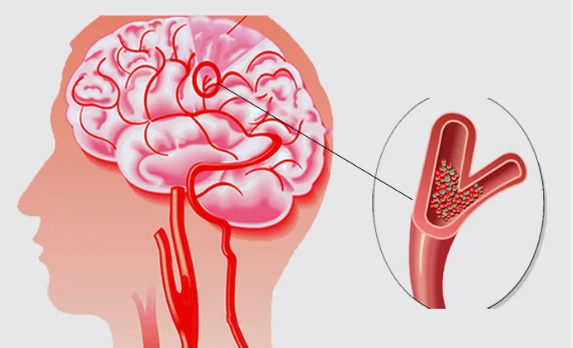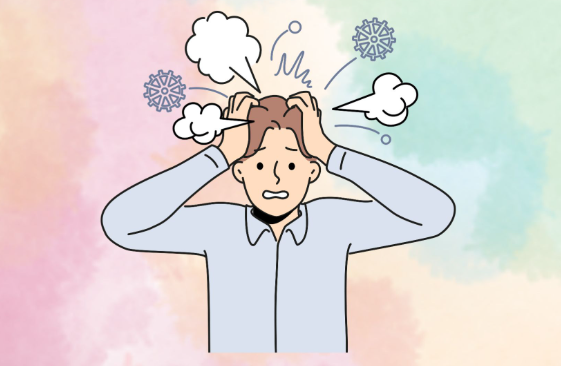Introduction
Fibromyalgia is a chronic disorder characterized by widespread pain, fatigue, cognitive dysfunction (fibro fog), and neurological symptoms. Some individuals with fibromyalgia report experiencing stroke-like symptoms, leading to concerns about transient ischemic attacks (TIAs), also known as mini-strokes.
While fibromyalgia does not directly cause TIAs, many symptoms associated with fibromyalgia, such as numbness, dizziness, slurred speech, and confusion, can mimic a mini-stroke. Understanding the relationship between fibromyalgia and TIA-like symptoms, as well as how to differentiate them from an actual mini-stroke, is crucial for proper diagnosis and management.
1. What Is a Transient Ischemic Attack (Mini-Stroke)?
A transient ischemic attack (TIA), or mini-stroke, occurs when there is a temporary blockage of blood flow to the brain. Unlike a full stroke, TIAs do not cause permanent brain damage, but they are a serious warning sign of an increased risk of a major stroke in the future.
1.1 Symptoms of a TIA (Mini-Stroke)
✔ Sudden numbness or weakness (usually on one side of the body)
✔ Difficulty speaking or slurred speech
✔ Loss of vision or double vision
✔ Dizziness, vertigo, or loss of balance
✔ Severe headache with no known cause
✔ Short-term confusion or cognitive impairment
These symptoms typically last from a few minutes to an hour and resolve on their own. However, even though TIAs are temporary, they require immediate medical attention to prevent a future full stroke.
2. Can Fibromyalgia Cause Symptoms That Mimic a Mini-Stroke?
Although fibromyalgia does not cause TIAs, many of its symptoms can resemble mini–stroke episodes, leading to unnecessary panic. Some possible explanations include:
2.1 Migraines with Aura
✔ Fibromyalgia patients often experience migraine attacks with aura, which can cause:
- Temporary vision loss
- Numbness or tingling
- Slurred speech
- Confusion
✔ These symptoms can be mistaken for a mini-stroke, but they resolve without causing brain damage.
2.2 Dysautonomia and Poor Blood Circulation
✔ Fibromyalgia is linked to autonomic nervous system dysfunction (dysautonomia), which affects blood pressure regulation.
✔ Poor blood circulation can lead to lightheadedness, dizziness, and cognitive impairment, similar to a TIA.
✔ Symptoms may worsen when standing up too quickly (orthostatic hypotension) or after prolonged inactivity.
2.3 Anxiety and Panic Attacks
✔ Severe anxiety episodes in fibromyalgia can trigger:
- Shortness of breath
- Tingling sensations
- Dizziness and disorientation
- Temporary speech difficulties
✔ These panic-related symptoms may resemble a mini-stroke, but they are caused by the body’s stress response rather than a blood clot.
2.4 Medication Side Effects
✔ Certain medications used for fibromyalgia, such as antidepressants, muscle relaxants, or opioids, can cause:
- Drowsiness or confusion
- Dizziness and balance issues
- Memory lapses or brain fog
✔ These side effects can mimic TIA symptoms but are reversible upon adjusting medication dosages.
3. How to Differentiate Between a TIA and Fibromyalgia Symptoms
3.1 FAST Test for Stroke Recognition
Use the FAST method to identify a true TIA or stroke:
✔ F – Face Drooping: Does one side of the face droop when smiling?
✔ A – Arm Weakness: Is there sudden weakness or numbness in one arm?
✔ S – Speech Difficulty: Is speech slurred or incomprehensible?
✔ T – Time to Call 911: If these symptoms appear suddenly, seek emergency medical help immediately.
3.2 Key Differences Between a Mini-Stroke and Fibromyalgia Symptoms
| Feature | Transient Ischemic Attack (TIA) | Fibromyalgia-Related Symptoms |
|---|---|---|
| Onset | Sudden, within seconds | Gradual or episodic |
| Duration | Minutes to an hour | Can last hours or fluctuate |
| Face drooping | Common | Rare |
| Weakness | Usually on one side of the body | Can affect both sides |
| Speech problems | Slurred or incomprehensible speech | Mild word-finding difficulty (fibro fog) |
| Cognitive impairment | Severe and immediate | Gradual, mild brain fog |
| Headache | Can occur suddenly | Common, especially in migraines |
If you experience sudden, severe neurological symptoms, seek emergency medical attention immediately to rule out a mini-stroke.
4. Diagnosing Stroke-like Symptoms in Fibromyalgia
4.1 Medical Evaluation
A doctor will assess:
✔ Medical history (fibromyalgia, migraines, anxiety, etc.)
✔ Cardiovascular risk factors (hypertension, diabetes, smoking, etc.)
✔ Current medications and possible side effects
4.2 Tests to Rule Out a Mini-Stroke
✔ MRI or CT Scan: Checks for signs of a stroke or TIA.
✔ Carotid Ultrasound: Identifies arterial blockages or poor blood flow to the brain.
✔ Electrocardiogram (ECG): Detects irregular heart rhythms (atrial fibrillation) that may cause TIAs.
✔ EEG (Electroencephalogram): Rules out seizures that may mimic a stroke.
✔ Blood Tests: Evaluates cholesterol levels, blood sugar, and clotting factors.
If all tests return normal, the symptoms may be linked to fibromyalgia-related nervous system dysfunction or migraines rather than an actual mini-stroke.
5. Treatment and Prevention of TIA-like Symptoms in Fibromyalgia
5.1 Managing Fibromyalgia-Related Neurological Symptoms
✔ Prevent Migraine Attacks:
- Use magnesium supplements, beta-blockers, or triptan medications.
- Avoid caffeine, alcohol, and processed foods that trigger migraines.
✔ Improve Circulation and Blood Flow:
- Engage in gentle movement (yoga, stretching, or walking).
- Stay hydrated and avoid prolonged sitting.
✔ Manage Anxiety and Stress:
- Practice deep breathing exercises, meditation, or therapy.
- Use natural calming supplements like magnesium or ashwagandha.
✔ Monitor Medications for Side Effects:
- If neurological symptoms worsen, consult a doctor about adjusting medications.
5.2 Stroke Prevention for Those at Risk
If you have hypertension, diabetes, or high cholesterol, take extra precautions:
✔ Lower Blood Pressure: Reduce salt intake, maintain a healthy weight, and stay active.
✔ Control Blood Sugar: Manage diabetes with a low-glycemic diet and regular exercise.
✔ Take Prescribed Medications: If recommended, use blood thinners or cholesterol-lowering drugs to reduce stroke risk.
6. Conclusion: Understanding Mini-Stroke Symptoms in Fibromyalgia
Many people with fibromyalgia experience neurological symptoms that mimic transient ischemic attacks (TIAs), such as numbness, slurred speech, and dizziness. While fibromyalgia does not cause mini-strokes, it is important to distinguish between a TIA and fibromyalgia-related symptoms.
If symptoms are sudden, severe, or one-sided, seek emergency medical care to rule out a real mini-stroke. However, if the symptoms are recurrent and fluctuate, they may be linked to fibromyalgia, migraines, anxiety, or dysautonomia.
Would you like more information on neurological symptoms in fibromyalgia or stroke prevention strategies?

Click Here to Visit the Store and find Much More….
For More Information Related to Fibromyalgia Visit below sites:
References:
Fibromyalgia Contact Us Directly
Click here to Contact us Directly on Inbox
Official Fibromyalgia Blogs
Click here to Get the latest Chronic illness Updates
Fibromyalgia Stores









